Why is footfall data so important in retail?
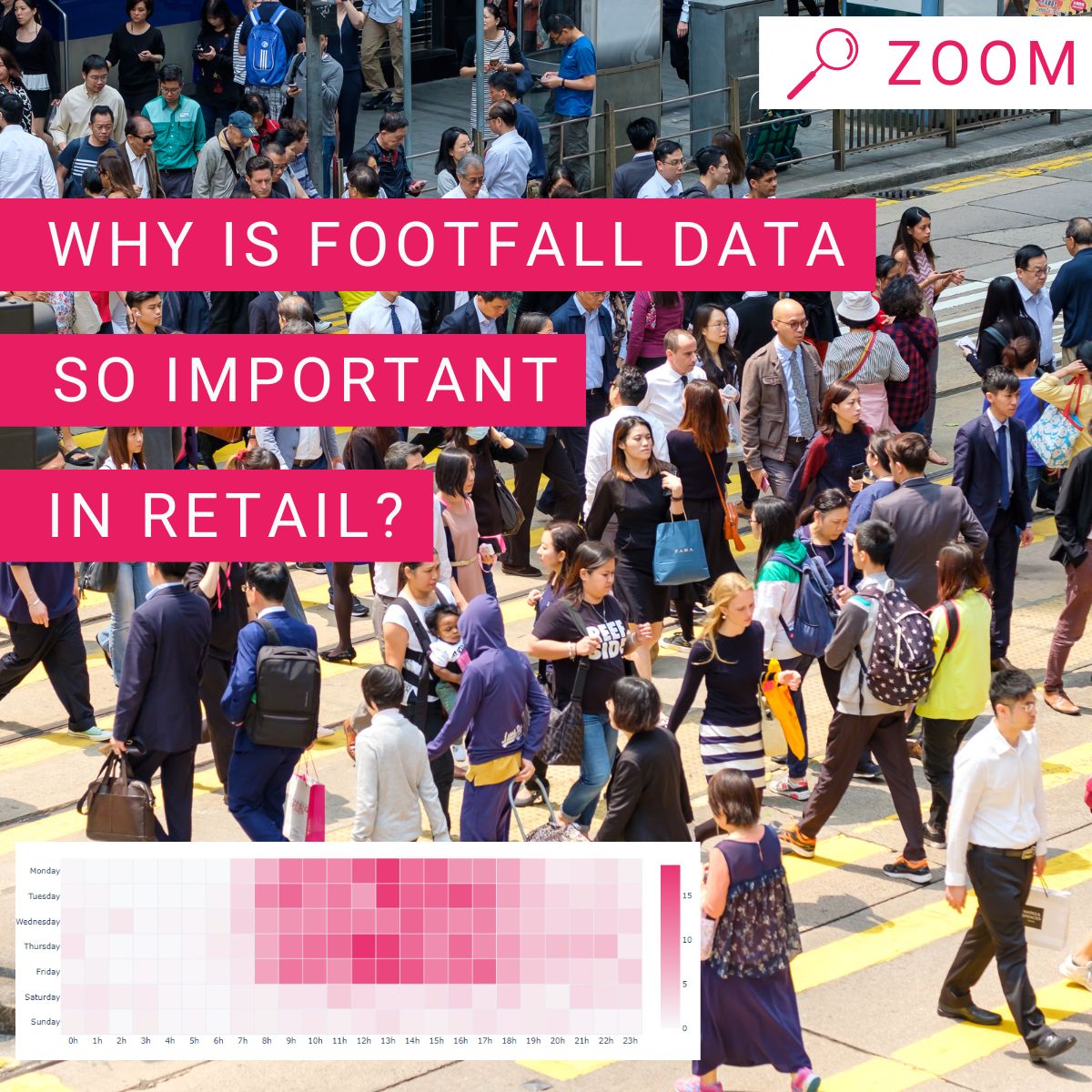
By integrating footfall data into their omnichannel development strategy, brands and retailers can target their new retail locations in an increasingly surgical manner.
Measuring the number of pedestrians passing through an area and knowing the number of pedestrians passing through an address has become essential data for many shopkeepers, restaurateurs, distributors, advertisers, etc.
With increasingly powerful geomarketing tools, there is no need to be a data analyst to exploit pedestrian flow data in order to benefit your brand.
How do we identify the most visited areas of passage?
What are the methods used to measure the flow of pedestrians and vehicles in an area, a neighbourhood, a street, in front of a shop, at a crossroads…?
And how can pedestrian flow data be used to improve the performance of distribution networks?
Some Explanations.
Pedestrian flows: a definition
Pedestrian flow and footfall data refer to all data relating to the movement of pedestrians within a defined geographical area.
Pedestrian flow can be measured at different levels of granularity: neighborhood, street, pavement, shop, etc. For a detailed view, the traffic data for a zone is broken down by day of the week and by time of day. Depending on the tools used, pedestrian flow data is presented in different forms : a heatmap gives information on the most frequented areas while looking at a footfall matrix will let you easily identify the most frequented days and time slots.
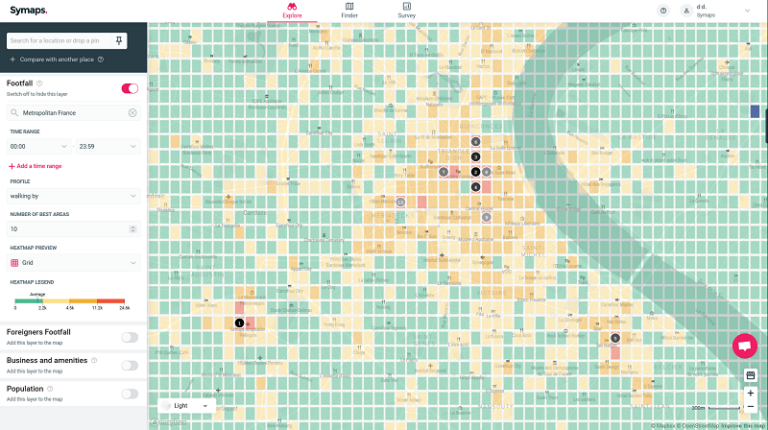
Footfall heat map example.
Visualise the pedestrian traffic data of a district on a map to identify the most frequented areas (source: Symaps geomarketing platform)
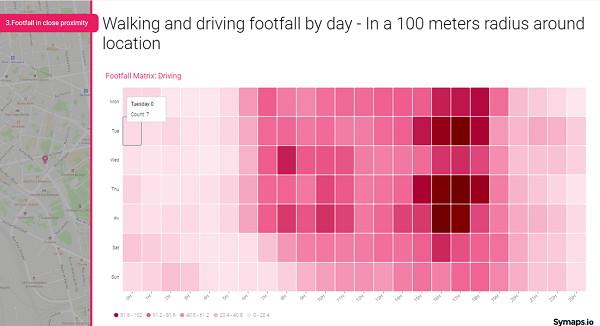
Footfall matrix by time and day.
Analyse the most frequented days and time slots (source: Symaps location reports)
Pedestrian flow, how to measure it?
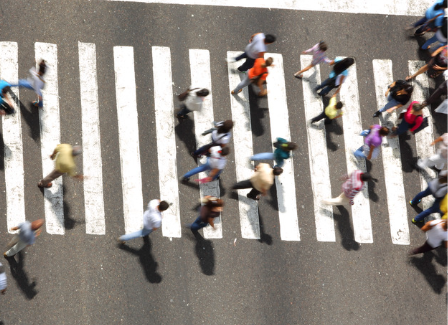
There are several methods to measure how many people pass by a place.
The first method of measuring pedestrian flows is to install sensors (infrared or laser sensors, cameras, counters) to detect the presence of pedestrians. The data is then measured in real time, giving an accurate portrayal of the number of pedestrians walking on a pavement or entering a shop. This method has the advantage of measuring pedestrian traffic with a high degree of accuracy but it can be costly because of the requirement to install physical sensors.

What about car flow?
While pedestrian flow is widely used in retail, it can also be useful to measure the passage of vehicles in an area.
This is particularly useful for identifying the best locations for the installation of electric vehicle charging stations, for example.
A tool such as Symaps can be used to visualise and exploit pedestrian and vehicle flow data.
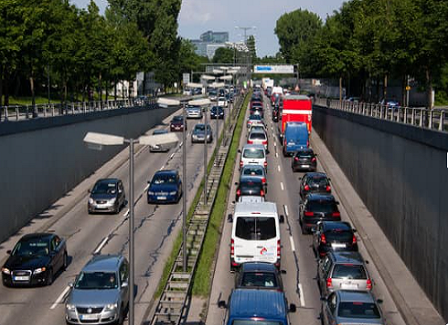
Pedestrian flows, multiple uses of footfall data in retail
Focus on the main applications of pedestrian flow data.
Choosing a business location
Have you identified a business location, but is it in a high-traffic area? Is the area busy during the week or at the weekend? During the day or in the evening? What are the peak hours and days? Does it fit your business?
Before deciding to invest in a retail outlet, it is essential to ensure that these questions are answered, particularly in order to consolidate your business plan. This is especially true for shops and activities whose turnover is largely based on the number of visitors to the area, such as a bakery, a restaurant, etc.
See detailed use case: find and validate the best places to open a restaurant.
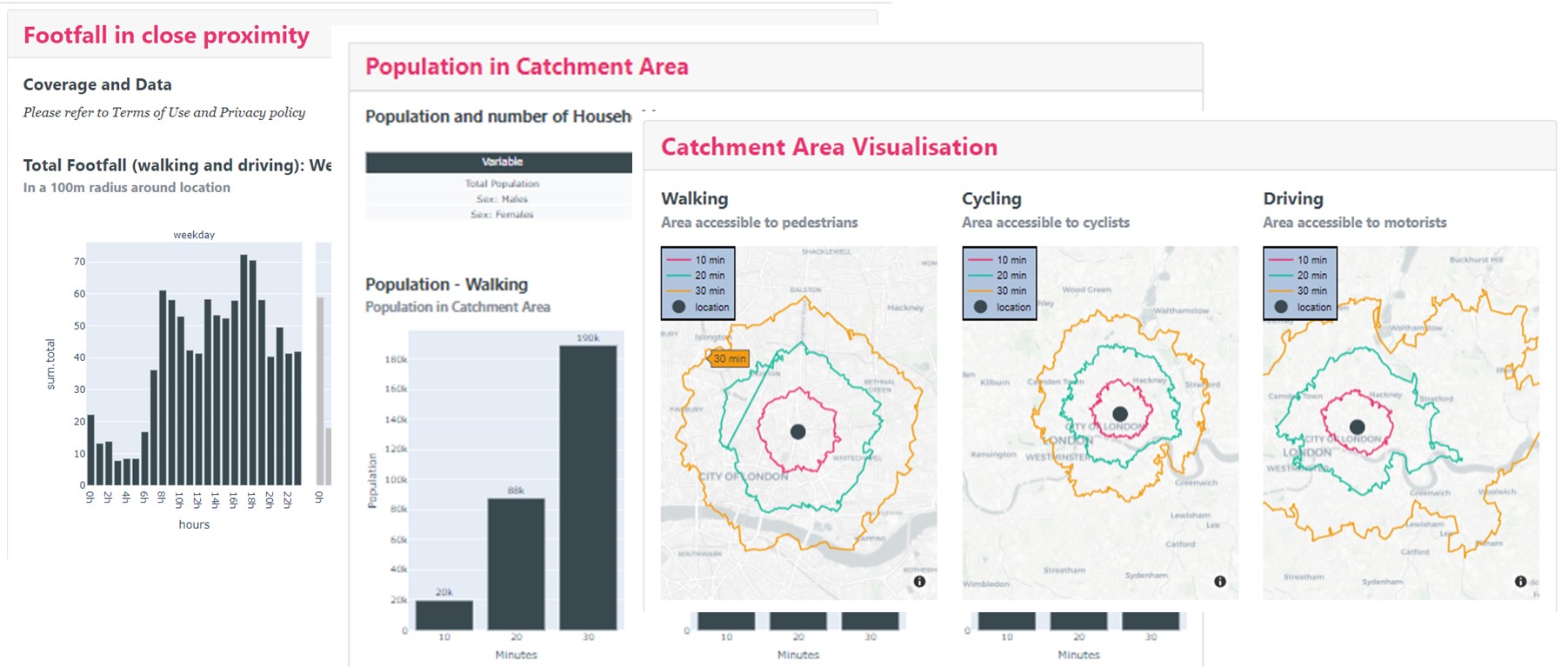
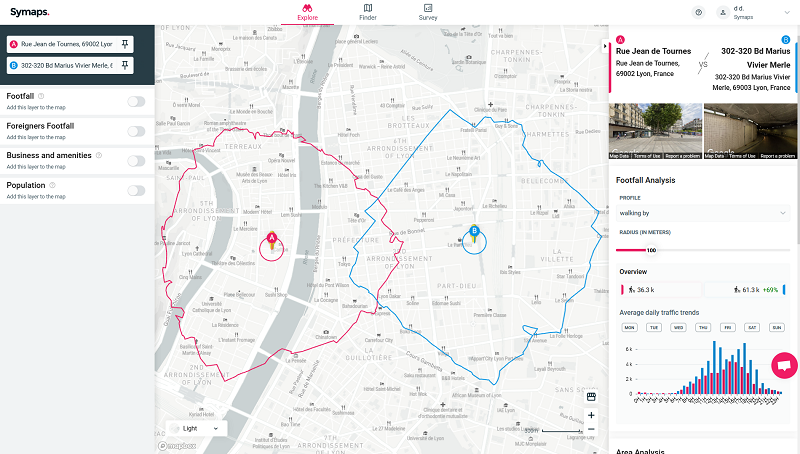
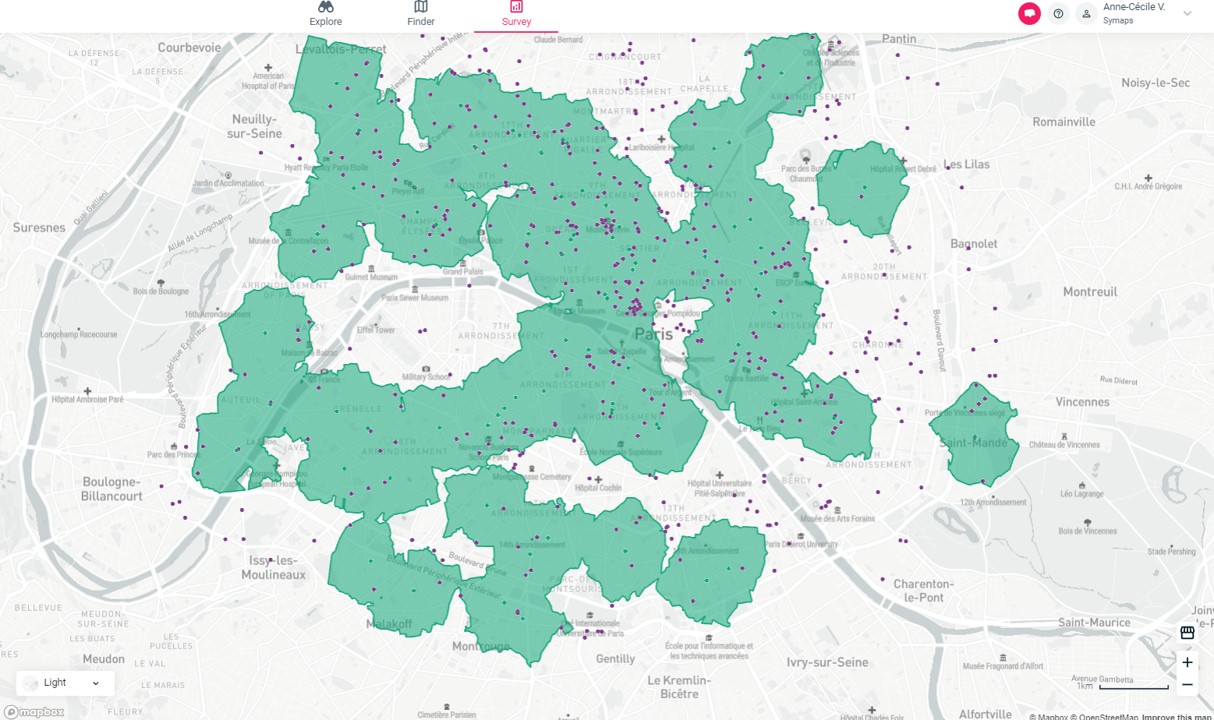
Discover how to target your expansion with Symaps location intelligence platform.
Expansion strategy and network management
The analysis of the frequentation of the areas where the successful outlets of a brand – or of its competitors – are located makes it possible to establish the criteria to be met for the opening of outlets with similar characteristics: minimum volume of frequentation, days and peak hours,…
Using a geomarketing platform, potential areas and locations that meet the required criteria can be quickly identified. With just a few clicks, lists of potential locations that meet the desired criteria can be obtained. Pedestrian flow, traffic patterns, socio-demographic profile and other businesses in the area are entered into the platform, which then identifies the best locations.
Performance Analysis of a sales outlet
What are the impacts of variations in the number of visitors to a zone on sales? Is there a loss of revenue?
The study of pedestrian flows is also useful in the context of analyzing the performance of a sales outlet (turnover, visits, etc.).
Of course, pedestrian flow data is only one parameter of the analysis, but it is becoming increasingly complicated to ignore it, particularly with the recent changes in consumption and travel habits linked to the rise of e-commerce or teleworking.
In addition to the footfall in the area, it is useful to know what other businesses and points of interest are nearby, to identify competitors, to understand which businesses are generating traction, and to know which traction businesses are nearby.


Exposure to a targeted advertising campaign
Advertising campaigns or street marketing actions are closely linked to the number of visitors to the area. The development of targeted marketing actions is also based on the study of pedestrian flows and the number of visitors in the area: “happy hours” type offers to compensate for off-peak hours, maximum exposure during periods of high visitor numbers, etc.
Pedestrian flows: which solutions for retail?
To accurately measure footfall at a very high level of granularity, it will be more efficient to use a solution that measures pedestrian flows using physically installed sensors, or even manual counting to address a specific issue.
Without the need to install sensors, the use of data transmitted by smartphones is more economical, especially as it allows studies to be extended to different geographical areas and several points of sale.
For a larger study on a territory, on several locations for example, and with more backdating on the data, the use of a geomarketing application using anonymised travel data collected by smartphones allows for this, with a sufficient level of granularity.
This also allows for a comparison of traffic between different locations with just a few clicks.
Footfall data and geomarketing analysis with Symaps
By combining footfall data with other geolocalised data such as socio-demographics, Symaps determines the best locations fulfilling precise targeting criteria.
Direct or indirect distribution network management and expansion, market study, at local or international level…
Discover how to target your expansion with Symaps location intelligence platform.
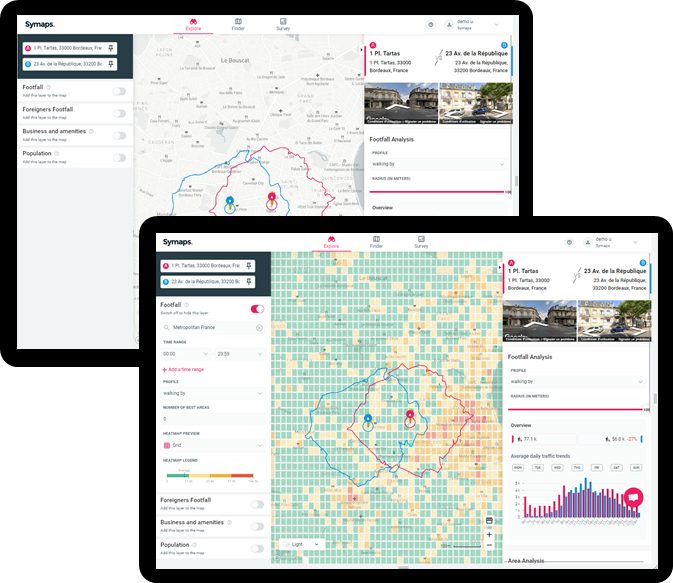
Share post